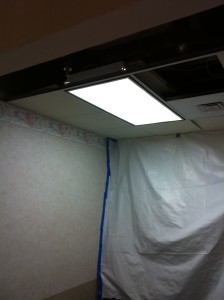 1. Walk-In and Linen Closets – Efficient organized space is a must have! Having linen closets are another added design feature in demand.
1. Walk-In and Linen Closets – Efficient organized space is a must have! Having linen closets are another added design feature in demand.
2. Large Kitchen with Kitchen Island – A well planned kitchen with storage and several work areas is definitely in demand. Kitchen islands are designed to allow both food preparation and hang out space for family and friends.
3. Overall Energy Efficient Home – In today’s economy, having an energy efficient home is a no-brainer to reduce monthly costs and also to reduce dependence on fossil fuels. Energy efficient appliances and high-efficiency insulation and windows are the biggest factors to take into consideration.
4. Large Windows – Take advantage of the natural light (and heat source) from large windows. Just be careful; high arch window designs can be costly!
5. Ceiling Fans – Essential to bringing the ceiling heat down in winter and cooling in summer, and are particularly needed in the master bedroom and main living areas to reduce air conditioning and heating costs.
In residential home building and design, it pays to listen to your customers and what design features are must-haves. Philippi Quality Construction applies their team approach to architecture and construction resulting in a smooth experience.









 The Department of Energy (DOE) has announced new voluntary energy-saving specifications for lighting “troffers” (rectangular overhead fixtures used in commercial buildings) as well as parking lot and parking structure lighting. To reduce energy bills and carbon emissions, building operators can voluntarily adopt these specifications for new buildings and/or building upgrades. The performance criteria for the specifications were developed by DOE’s Commercial Building Energy Alliances (CBEAs), a group of US companies representing various sectors that have identified energy-efficient and cost-saving practices.
The Department of Energy (DOE) has announced new voluntary energy-saving specifications for lighting “troffers” (rectangular overhead fixtures used in commercial buildings) as well as parking lot and parking structure lighting. To reduce energy bills and carbon emissions, building operators can voluntarily adopt these specifications for new buildings and/or building upgrades. The performance criteria for the specifications were developed by DOE’s Commercial Building Energy Alliances (CBEAs), a group of US companies representing various sectors that have identified energy-efficient and cost-saving practices.